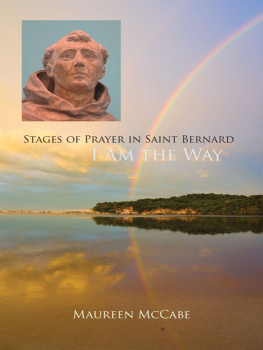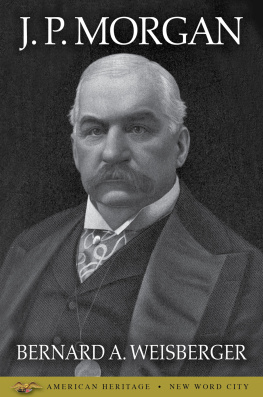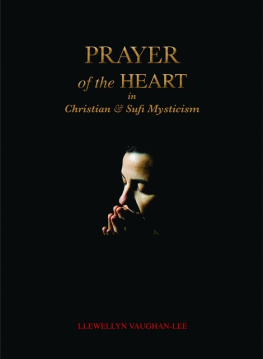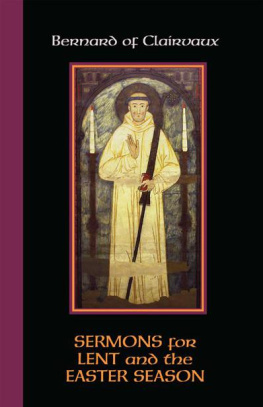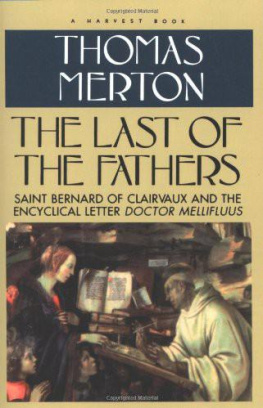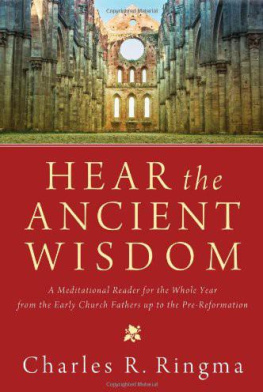

The Crossroad Publishing Company
www.crossroadpublishing.com
Copyright 2003 by Bernard McGinn and Patricia Ferris McGinn
Several portions of this book include revised and expanded material from The Foundations of Mysticism and The Growth of Mysticism, both by Bernard McGinn.
Illustrations by Bro. Michael ONeill McGrath, OSFS
All rights reserved. No part of this book may be reproduced, stored in a retrieval system, or transmitted, in any form or by any means, electronic, mechanical, photocopying, recording, or otherwise, without the written permission of The Crossroad Publishing Company.
Printed in the United States of America
Library of Congress Cataloging-in-Publication Data
McGinn, Bernard, 1937
Early Christian mystics : the divine vision of the spiritual masters / Bernard McGinn and Patricia Ferris McGinn.
p. cm.
Includes bibliographical references.
ISBN 978-0-8245-9913-3
1. Mysticism History Early church, ca. 30600. 2. Mysticism History Middle Ages, 600-1500. I. McGinn, Patricia Ferris. II. Title.
BV5075.M365 2003
248.2209 dc21
2003003726
This printing: September 2016
In Memoriam
Katie and Jack Ferris
Contents
Twelve, like three and seven, is one of the sacred numbers. Prominent in the Bible, it seems inscribed into the very cosmos, as its use in many religious traditions attests. Twelve often signifies sacred foundations in the human world. The twelve patriarchs stand at the origin of the Jewish people, just as the twelve apostles are the foundation upon which Christ built his church. Tradition and imagination have discerned numerous other twelves in sacred history, such as the twelve prophets of the Hebrew Bible and the twelve fruits of the Holy Spirit mentioned by Paul. The Calabrian seer Joachim of Fiore (d. 1202) was particularly fertile in discerning historical patterns of twelves, often by combining sevens and fives, as one of the keys to unlock the action of divine providence.
In putting together this brief introduction to the Christian mystical tradition up to the year 1200, it was no accident, though not originally a conscious choice, that the number twelve emerged as the most fitting for a selection of figures to illustrate the foundations of Christian mysticism. The dozen sketches contained here are based on the treatments found in the first two volumes of the ongoing series The Presence of God: A History of Western Christian Mysticism.audience in numerous ways. Not only has the apparatus of footnotes and technical discussion been left behind, but we have sought to focus each portrait on a distinctive contribution that the mystic made to the broader tradition. This has led to the introduction of new material in some places and the rearrangement and recasting of the older material in others. While most of the sketches are necessarily shorter than the extended treatments in The Presence of God, in a few cases, such as Gregory of Nyssa and Hildegard of Bingen, they are actually longer. Like The Presence of God, Early Christian Mystics concentrates on Western Christian mysticism, so only those patristic Greek mystics are treated who had some significant impact on the West (Origen, Evagrius, Gregory of Nyssa, Dionysius). This means that some of the later Byzantine figures, notably Maximus Confessor (d. 662) and Symeon the New Theologian (d. 1022), will not be treated here, though they too are foundational for the wider story of Christian mysticism up to 1200.
The mystical element in Christianity, as we are using the term mystical here, is that part of belief and practice that concerns the preparation for, the consciousness of, and the reaction to what the mystics understand as a direct, immediate, and transformative encounter with the presence of God. Though many mystics speak of such transformative direct contact as attaining union with God, others avoid this language, so we have preferred to speak of presence. But presence itself, like so much else in mysticism, is not a simple and straightforward notion. God cannot be present the way a thing is present, because God is literally no-thing. God may become present in a way somehow similar to how two persons are present to each other, especially in the presence of lovers; but God as infinite person so far exceeds the categories and consciousness characteristic of our own finite subjectivity that the divine presence is often realized in forms of absence and negation that mystics have explored with courage, tenacity, and great subtlety. One thing that all mystics insist upon is that what they come to know of God through their yearning for and meeting with the divine presence is incommunicable, at least insofar as we understand ordinary communication. As one of the pre-1200 mystics not treated here once said: We say what we can when we want to speak about the Ineffable One about whom nothing can be said in the proper sense; we must either keep silence, or use words in a transformed way (Isaac of Stella, Sermon 22). Conveying mystical consciousness is a necessary impossibility.
Despite the ambiguities of presence and absence, and notwithstanding the impossibility of really saying what they found, the transformation that the early Christian mystics underwent impelled them to speak and to write in order to invite others to undertake the path they walked. In trying to understand the different aspects of that search as it is presented by the twelve figures treated here, it is important to stress a few basic characteristics of mysticism that have not always been properly understood.
First, mysticism is an element in the Christian religion, not a religion within the religion. Each of the figures treated below was certainly a mystic but also an individual who lived in the midst of the Christian community, which each served in many other capacities, such as teacher, monastic, bishop, and even pope. To call them mystics does not exhaust their other activities and contributions to the history of Christianity.
Second, it is also important to see mysticism as a total process, not merely some particular moment or moments in or beyond time where special contact with God is made. Mysticism is a journey, a path that almost invariably demands long preparation and whose true attainment can be measured only by the effects that mystics have upon others, both their contemporaries and their readers over the centuries. All the mystics took finding deeper contact with God as the central goal of their lives. The purpose of this volume is to make some small contribution to the ongoing dissemination of their transformative message.
Since Christian mystics live and teach in the midst of the community with its many and changing beliefs and practices, these twelve mystics have much to say about the Christian life in general. Reading and praying the Bible, partaking of the sacraments, practicing asceticism and self-denial, training in virtue, devotion to higher forms of prayer and contemplation these are all implied and often explicitly set forth in the writings of these early mystics. Various attempts to describe the deeper, more direct, and personally intimate encounter with God that characterizes mystical consciousness are also expressed in a wide variety of ways among the writings of the mystics.
In the sketches below we have tried to give a sense of the general teaching of each figure, but we have also sought to highlight one distinctive aspect of the thought that characterizes each mystics contribution to the broader tradition. Mystical writers over the centuries have used a variety of styles, voices, and teaching methods. Each of the chapters that follow tries to suggest this by centering on a special contribution that demonstrates how the figure treated can be considered a true founder of mysticism.
Next page

